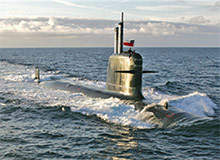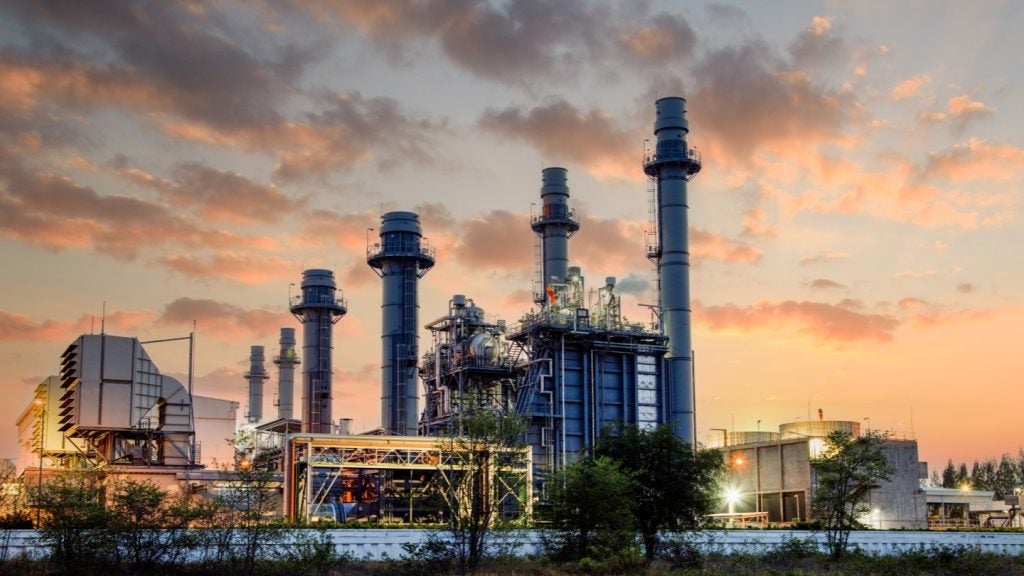
Russian President Dimitry Medvedev’s visit to Venezuela and Brazil was not just about discussing energy issues. The nation’s nuclear submarine programme also came up in conversation, highlighting the close ties energy and defence can have. To be put simply, in Brazil’s case, energy security seems to be the most compelling reason – or easiest pretext – for defence expansion.
Having recently discovered large new oilfields offshore, Brazilian leaders say they want nuclear-powered submarines to protect them. At first sight, naval reactor technology should also aid Brazil’s civilian nuclear power efforts and Brazil is, in fact, collaborating with Argentina to expand its nuclear energy output. However, naval nuclear propulsion is significantly less valuable for civilian purposes than for military ends – specifically, the development of weapons-grade fissile material.
More Oil, More Muscle
In November 2007 Petrobras (Brazil’s state oil company) publicly estimated recoverable reserves of between 5 billion and 8 billion barrels of oil equivalent (BOE) of petroleum and natural gas at the Tupi field, roughly 250 miles south of Rio de Janeiro. This reserve projection makes Tupi the second-largest oil discovery in the past two decades.
In August, Brazil’s Defence Minister Nelson Jobim disclosed that Brazil intends to spend US$160m by the end of 2009 on developing a nuclear-propelled submarine as the centerpiece of a new and more expensive defence plan. The sub would entail significant technology transfer and technical assistance from France.
See Also:
Jobim explicitly justified this project as a means to protect Brazil’s new offshore discoveries – an explanation that received a superficial boost in September, when a Petrobras-led consortium announced that another recently discovered crude deposit in the Santos Basin contains up to 4bn BOE.
How well do you really know your competitors?
Access the most comprehensive Company Profiles on the market, powered by GlobalData. Save hours of research. Gain competitive edge.

Thank you!
Your download email will arrive shortly
Not ready to buy yet? Download a free sample
We are confident about the unique quality of our Company Profiles. However, we want you to make the most beneficial decision for your business, so we offer a free sample that you can download by submitting the below form
By GlobalDataAll this successful prospecting is good news for Brazil and everyone else but is the notion of a nuclear-powered sub to guard offshore oil a non sequitur?
Offshore oil platforms present a singular profile of economic significance and physical vulnerability. Indeed, immobile coastal rigs are uniquely exposed to attacks from literally every direction, from underwater to overhead. Moreover, offshore platforms are susceptible to a variety of tactics, including seizure and booby-trapping as well as straightforward destruction.
Clearly, defending offshore platforms is a challenging task. But from a purely military perspective, nuclear-powered subs might be the least appropriate tool for direct fixed-site defence.
Brazil’s Advantages
In fact, subs with nuclear propulsion are better for long-range, persistent sea denial and power projection, which are exactly the types of missions a nation would execute to disrupt another nation’s oil production and trade. Most obviously from a regional perspective, Venezuela critically depends on oil exports – more so than Brazil, which not only has other raw materials to export but also possesses a larger and more developed domestic economy. Thus, sea denial would hurt Venezuela more.
Even leaving aside the strategic utility of a regional arms race subs are not the only or even most efficient way to tackle an expanding Venezuelan military. Brazil shares a long border with Venezuela. Granted, it cuts through some of the thickest jungle terrain in the world but the key point is geographical depth. Not only is Venezuela much smaller than Brazil but its shape relative to its border with Brazil means that Venezuelan oilfields and infrastructure are within range of standard strike aircraft (not to mention missiles) should Brazil expand its military presence in the Amazon Basin. On the other hand, Brazil’s own offshore oilfields – the Santos and Campos basins – are at the southern edge of Brazil, and thus over a thousand miles from the Venezuelan border.
Of course, submarines have uses aside from threatening Hugo Chavez. Indeed, Brazilian naval leaders had a front-row seat for the Falklands war when a nuclear-powered British submarine sunk an Argentine cruiser. Cognizant of its dependence on sea lanes and lacking comparable oil resources, Argentina has been cooperating with Brazil on energy development above and beyond the standards implied by Mercosur, and Brazil would obviously not mind being Argentina’s primary energy supplier next door.
But in the area of nuclear power, ironically, Argentina is cooperating with Brazil only on commercial reactors, not on naval reactors.
Form Follows Function
Brazil is doubtless smart to expand its nuclear energy output, even given its obvious oil wealth. Given the recent history of oil prices, as well as environmental concerns, the value of energy diversification is almost universally accepted but it has particular resonance in Brazil for two reasons.
- If global warming causes environmental volatility, then minimising domestic oil consumption is highly synergistic. Brazil has historically relied on plentiful hydroelectric power but in 2001 a severe drought prompted the Brazilian government to reconsider energy diversity.
- Brazil also wishes to avoid the ‘oil curse’ that has warped the development of Nigeria and Venezuela, and thus would be wise to pursue diversification for both energy resource exports and internal energy consumption.
Brazil also has the natural resource base to be an efficient and self-sufficient nuclear power producer. Brazil’s proven and viable uranium reserves rank sixth in the world, and uranium prospectors have explored only a quarter of its territory. In this respect, Brazil’s potential to meet a significant portion of its energy needs with nuclear power is as high as that of any nation on earth.
However, Brazil is no stranger to commercial nuclear energy. Brazil contracted with Westinghouse in 1970 to build the country’s first nuclear reactor and struck a landmark deal with Germany in 1975 for the transfer and development of uranium conversion and enrichment technology. The Westinghouse reactor (Angra I) came online in 1982, the same year that Brazil first started producing commercial grade uranium—and three years after Brazilian officials first publicly expressed interest in a nuclear-powered submarine. If anything, this chronology belies the commercial-military synergy argument.
Furthermore, naval nuclear reactors provide much less leverage for commercial reactor development than they did 50 years ago. In the early days of nuclear energy, the early technology adopters (the US, Soviet Union, France and Britain) all used naval R&D to leverage civilian reactor buildouts, and vice-versa. However, civilian needs in this environment vary from naval requirements in many significant respects, from passive safety features to intraday cyclicality to pure power output requirements. Freed from the scale constraints inherent in naval reactor design, third- and fourth-generation commercial reactor designs therefore evolved into a distinct species adapted to dispersed and urbanised landscapes.
The Power of (Uranium) Concentration
From a strategic perspective the critical difference between civilian and naval nuclear energy is the degree of uranium enrichment required for each. Whereas commercial reactors use ‘low-enriched uranium’ (LEU) – i.e. uranium with modest concentrations of the key fissile isotope, U235 – naval ships generally and nuclear subs in particular use ‘highly enriched uranium’ (HEU).
For submarines, HEU fuel provides two advantages over the LEU baseline. First, HEU use extends the life of naval fuel cores by around an order of magnitude over their civilian cousins. The older French Rubis attack sub model, for example, has a 30-year core life, and new submarine cores are designed to run for 40 years without refueling.
Second, a less appreciated but equally important factor is reactor size. Lower enrichment requires larger volume to obtain the same power output, all other things being equal. Relative to surface ship design, submarine architecture is necessarily more sensitive to volume considerations; indeed, all surface ships since the carrier USS Enterprise have featured at least two reactors, whereas US, British, French and Chinese submarines use only a single reactor.
For subs in particular, compactness reduces not only economic costs but also acoustic profile and thus detectability. Crucially, smaller physical size makes for quieter reactors.
Of particular relevance to Brazil, France reportedly uses HEU at an over 80% enrichment level in its SSBNs. Although the current Skorpene design, which is a diesel-electric attack model, obviously has no such enrichment baseline, national military establishments and corporate vendors alike are loath to radically depart from their design experiences, which generally run in decade-long cycles and cost billions of euros.
In defence technology, as in economics, however, there is no free lunch: the efficiency of HEU means that it is virtually weapons grade.
Intention Versus Capability
The suggestion that Brazil might use its uranium enrichment programme to make nuclear weapons prompted a flat denial from Jobim, who called such speculation “total nonsense” last November. According to some observers, however, Brazil has been less than enthusiastic about giving International Atomic Energy Agency (IAEA) officials unfettered access to its nuclear facilities. And not all Brazilian officials are as politic as Jobim: In 2004, Brazil’s ambassador to the US, Roberto Abdenur, answered allegations that Brazil had obstructed IAEA access to certain nuclear facilities by stating that “submarines are not subject to the safeguards regimen, that’s my view of things.”
In all fairness, though, Brazil has probably been more open about the totality of its nuclear R&D than any other regional power. In fact, Brazil represents the first letter in the much-heralded ‘BRIC’ quartet of emerging-market giants, but in contrast to its peers, Brazil is by far the least nuclearised. Russia, China, and India all have nuclear weapons, and Russia and China have not only nuclear-propelled subs, but also submarine-launched ballistic nuclear missiles. India’s first nuclear-powered sub is slated for sea trials in 2009.
Moreover, Brazil’s entry into the nuclear submarine club would probably be the least upsetting of such additions. Since gaining independence in 1822, Brazil has fought exactly three wars, the last of which was World War II. And if countries were politicians, Brazil would probably register the lowest negative rating in any election poll.
Be that as it may, one thing is clear: you don’t need naval nuclear reactors to develop civilian power – and you can’t get to bomb quality uranium from civilian power alone.







